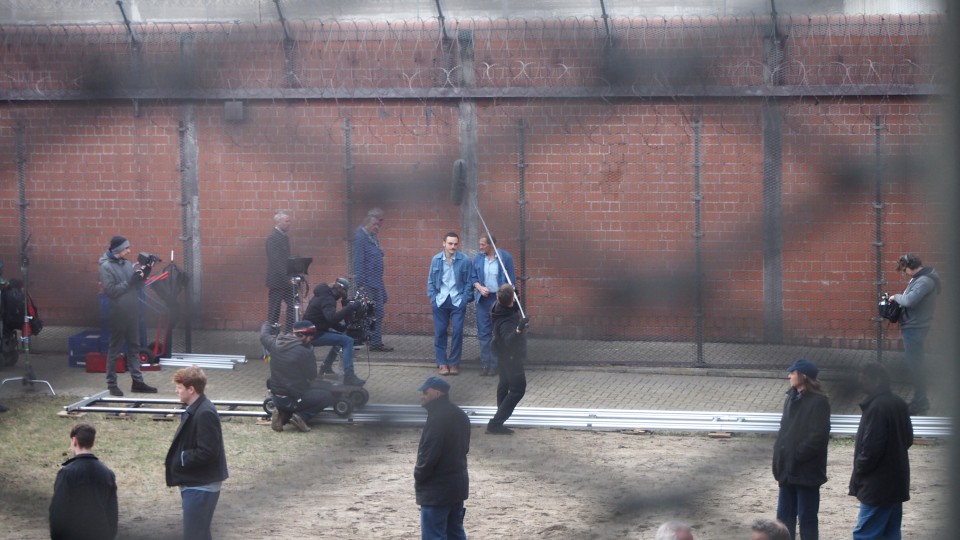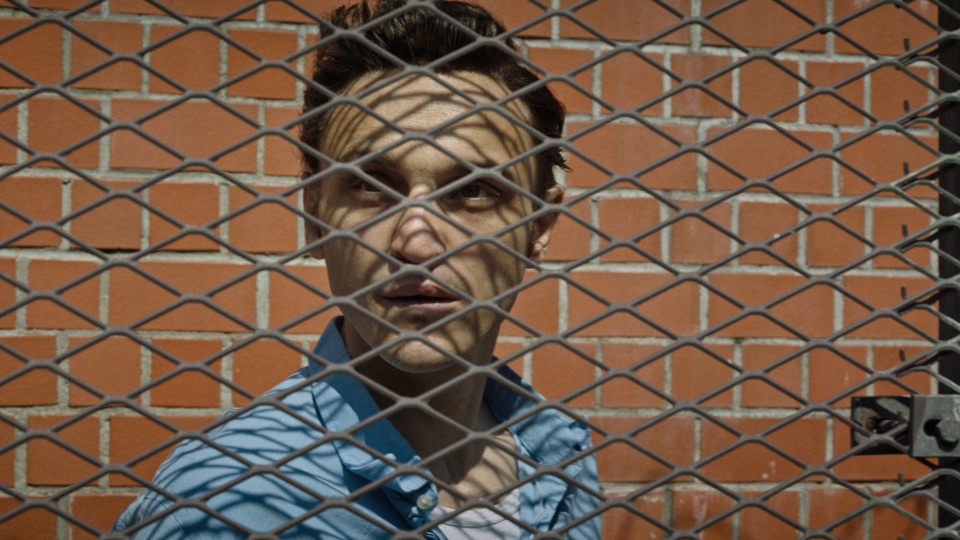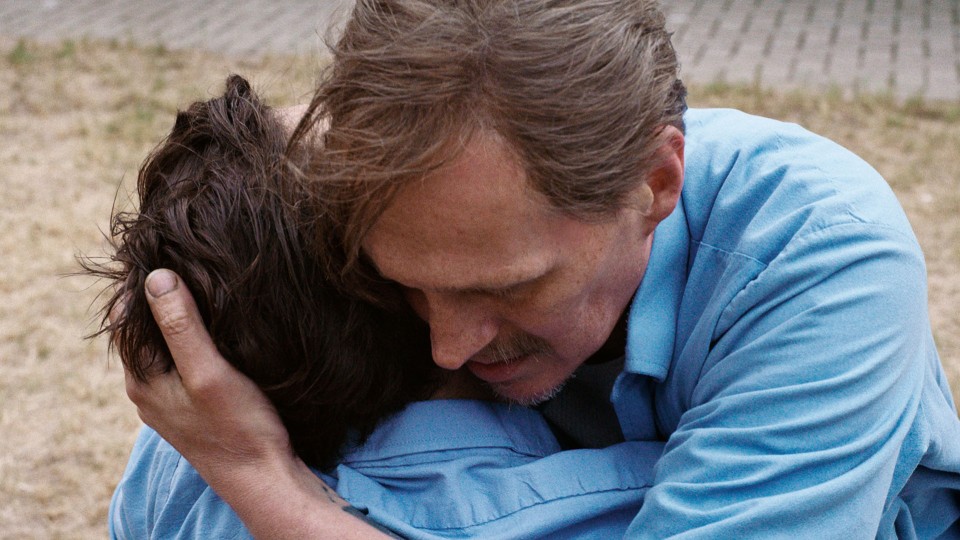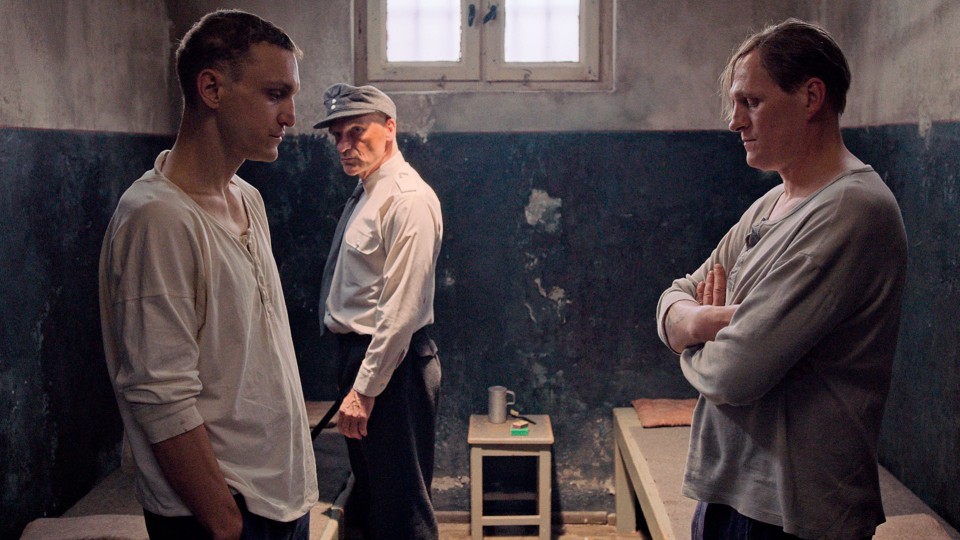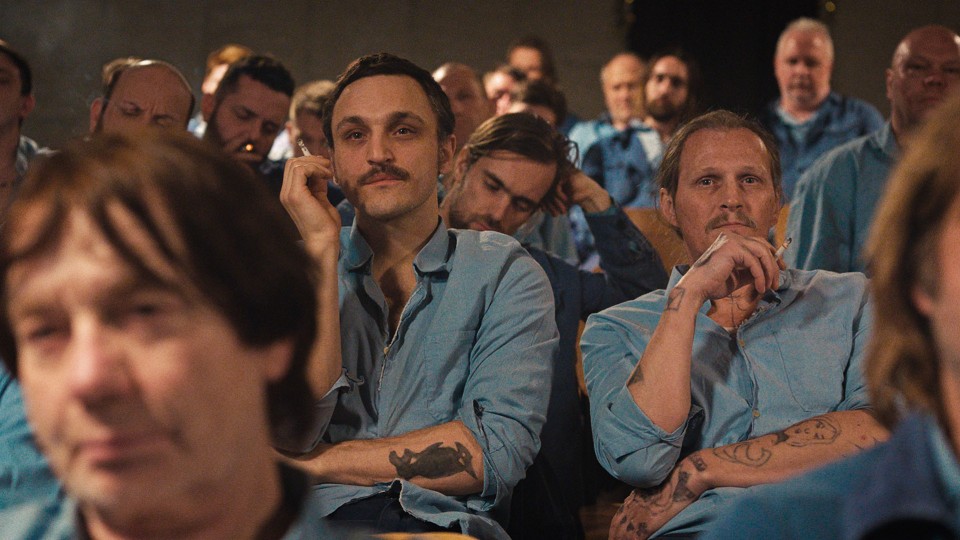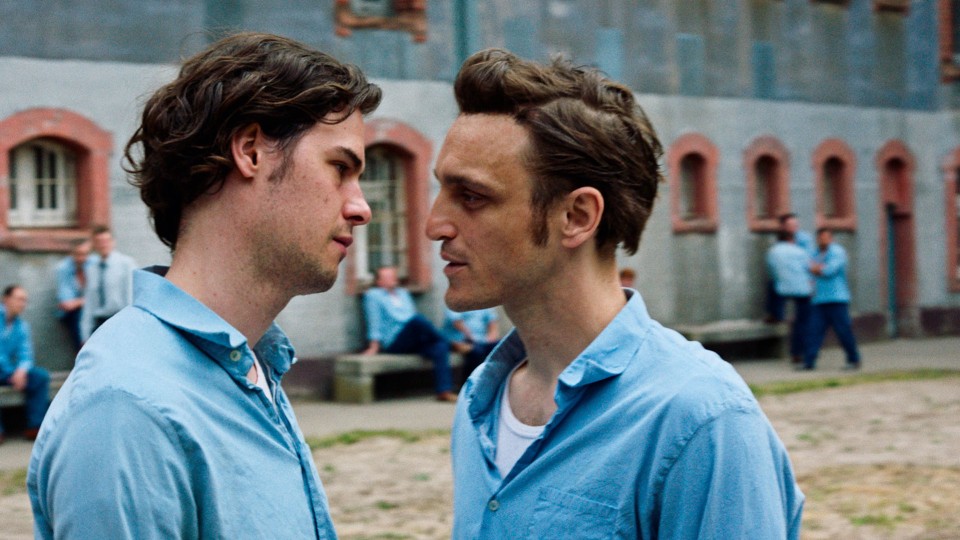We are talking on 14 July, the last shooting day of Sebastian Meise’s Great Freedom. What was on the schedule for today?
OLIVER NEUMANN: Yesterday Georg Friedrich, who plays Viktor, finished his scenes, and today we had the last scenes with Franz Rogowski, who
plays Hans Hoffmann, in the sewing room at the prison. Implementing the zone concept for shooting worked out very well. All
the members of the crew were very disciplined; for example, the people in Zone 1, in self-quarantine, even got their dinners
delivered to the doors of their apartment, and apart from going to work on the film they never left their apartments. By yesterday
we began to feel that the tension was gradually relaxing.
Let’s go back briefly to the days before the lockdown. What was the state of filming when you had to stop? What were your
ideas, doubts and insecurities at that moment?
OLIVER NEUMANN: It was Friday, 13 March. We’d originally planned to take a break from filming, so our leading actor Franz Rogowski could
lose a little weight in order to play his character at a different point in the story. But on that Friday we decided we wouldn’t
take a break after all and would carry on filming instead. That same day it was announced that air traffic had been shut down,
and then everything happened very fast. By the Sunday, when Austrians abroad were instructed to return to the country, the
situation had got to the point where the atmosphere was impossible, even though there was no explicit ban on filming. On Monday
we had a brief talk with the funding agencies, and then we stopped filming.
What does it mean when an Austrian production company is filming in Germany? What regulations apply?
SABINE MOSER: The three zone model is an Austrian idea. But there are comparable concepts in Germany. It was a stroke of luck that we were
using that large prison as a main location, so it was relatively easy to set up different entrances to the building, and the
three zones could easily be separated from one another. Apart from that, it’s an empty, well-ventilated building.
One huge issue related to the actors, who of course couldn’t maintain the minimum distance or wear a mask when they were on
camera. To get over that there were very clear regulations: five days before we began shooting, a sort of quarantine situation
had to be set up on location for the main actors and the direction department: it was like an extended prison.
Great Freedom is set predominantly in a prison. Did that mean you were filming in a studio, or was it a genuine location?
SABINE MOSER: It was a real prison. Our main location was very large disused prison in Magdeburg, where we were able to film the vast majority
of the film, set in different periods. We also had five days of filming in Austria for the scenes outside the prison, and
a few days filming in Berlin for the solitary cell locations. Since the action of the film takes place between 1945 and the
early 1970s, the leading actors had to undergo a very extensive ageing process, and Roman Braunhofer, Heiko Schmidt and Kerstin
Gaecklein managed that incredibly well. Naturally another huge challenge was the set construction, and here too our set designer
Michael Randel and his team did a fantastic job. You have to bear in mind the challenge they had, to present three different
time periods in the same location: the planning had to be extremely precise, and things were made even more difficult by the
Corona stoppage. In the preproduction stage we decided to film the different periods as self-contained blocks. We started
with the 70s, the main block, and we were just about able to finish that before the break in shooting. The break fell on the
second day of filming the scenes from the 50s. So the scenes that had to be re-shot could be kept in fairly manageable proportions.
What were you able to achieve during the lockdown period, and when did the concrete preparations for resuming the shoot begin?
OLIVER NEUMANN: There was always a sort of basic confidence that Great Freedom wouldn’t be abandoned so close to completion. Everything was discussed with the funding agencies, and it became apparent
that a consensual solution could be reached. Shutting down was painful, but it didn’t involve the fear that finishing the
film was really in doubt, even though the concrete solution was still unimaginable at the beginning of lockdown.
SABINE MOSER: The stoppage period was very challenging in a number of ways, and not just for us. After all, the director, Sebastian Meise,
was really torn away from shooting. He spent a lot of time in the editing room, and with his co-author Thomas Reider. Their
films are the product of very close collaboration, and as co-author and close creative partner Thomas is always present on
the set. During the stoppage they tried to get a grip as far as possible on the difficult external factors, such as how we
would handle the scenes with extras, and the planned move to Berlin that didn’t take place in the end. Sebastian demonstrated
a huge amount of energy and stamina. The preparations for resuming filming also turned out to be a huge challenge for us on
the production side. One major issue was how to handle the additional costs; how they could be kept manageable when it was
impossible to produce firm estimates. We were able to focus on that at a very early stage, and by the end of June we could
restart filming. It was a great help that 85% of the team could be with us again when we restarted.
What does the revised schedule for Great Freedom look like?
OLIVER NEUMANN: The forced break of lockdown wasn’t wasted: Sebastian Meise and Joana Scrinzi did some very intensive work on the editing.
The most important thing now will be for Sebastian to let go; he hasn’t yet had the opportunity to take a breath and say to
himself: “that’s out of the way now” after so much stress. As with all our films, we think it’s very important to give the
director time for himself. We don’t try to rush things. We are very happy and confident about the rough sequences we’ve seen
so far.
Great Freedom isn’t the only feature film project that was subjected to enforced Corona lockdown during the production phase. What is the
status of Stefan Ruzowitzky’s Hinterland at the moment?
OLIVER NEUMANN: Hinterland is filmed completely in blue screen. Half of it in Luxembourg, the other half in the Rosenhügel Studio in Vienna.
The stylistic concept is to use modern methods to create an expressionist setting à la Cabinet of Dr. Caligari. All the backgrounds are compiled from photographs and then animated in a large VFX studio. A soldier who is loyal to the
Austrian Emperor departs for the First World War, and when he returns from Russian prisoner-of-war camp seven years later
he discovers that the things he held dear – God, the Emperor and the Fatherland – have all gone. Everything is twisted and
distorted, and we attempt to convey the protagonist’s perception in stylistic terms. We actually finished filming at the end
of November 2019, although we had been considering postponing the shoot until spring 2020. We were really lucky that various
factors prompted us to film Hinterland in the autumn of 2019 instead.
How much progress has been made with the extensive postproduction work?
OLIVER NEUMANN: We always expected the visual effects phase to last about six months, and the other stages – like mixing and sound editing
– are less time-consuming. We have a partner in Belgium, Benuts Studio, for the digital work. Belgium was very badly hit by
Corona, so there was a lockdown there as well. At the moment it looks as though everything will be put back by three months,
so we’re thinking of December instead of September. It’s difficult to postpone everything. But unlike with Great Freedom,
in the case of Hinterland it doesn’t mean work has to be stopped completely. It just means that the digital work has to be done on a home office basis
instead.
What does working like this with home office actually mean in practice?
OLIVER NEUMANN: Every two weeks Benuts sends us a shotgun playlist where they present the shots they’re working on at the moment. Two days
later we have a Zoom meeting with Stefan Ruzowitzky, the cameraman Benedict Neuenfels, Oleg Prodeus, the digital art director
who designs the backgrounds and me, as well as the team in Belgium. That’s where we discuss the actual shots. It certainly
isn’t the same as being there in person. Not long ago we did a big colour correction test in Munich, and we were finally able
to see images on the big screen. Holding meetings over Zoom is an effective method.
Do you think this massive disruption will change your work in the long term?
SABINE MOSER: I think you have to consider it on different levels. Longer shoots and hygiene measures naturally have an effect on the budget,
but now we have a model that we can use as a basis for that. And hopefully the emergency measures by the Austrian government
will continue up to the moment that Corona is no longer classified as a pandemic, and the regular completion guarantee can
apply again. There will be a great challenge on another level, with creativity. By that I mean in front of the camera. And
at the moment, when cinemas find themselves in a very difficult situation, it’s impossible to predict how things will proceed
on the level of sales and distribution. I think right now that’s the greatest insecurity factor. How long will it be until
people once again want to sit close together in an auditorium to enjoy the cinema experience?
Interview: Karin Schiefer
July 2020
Translation: Charles Osborne

